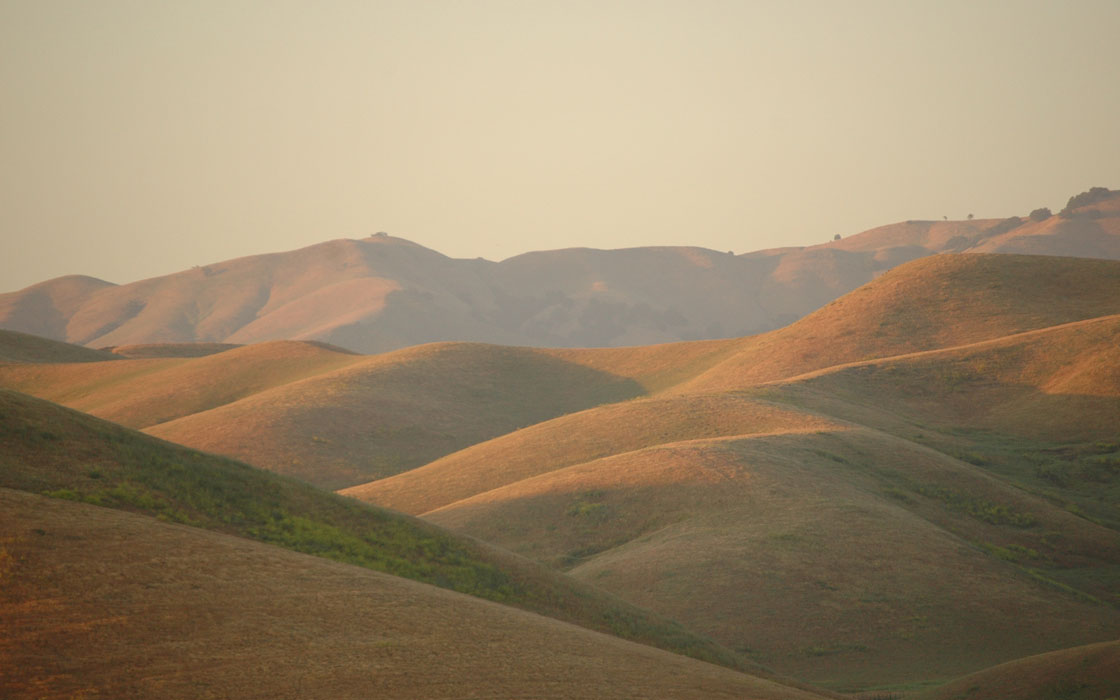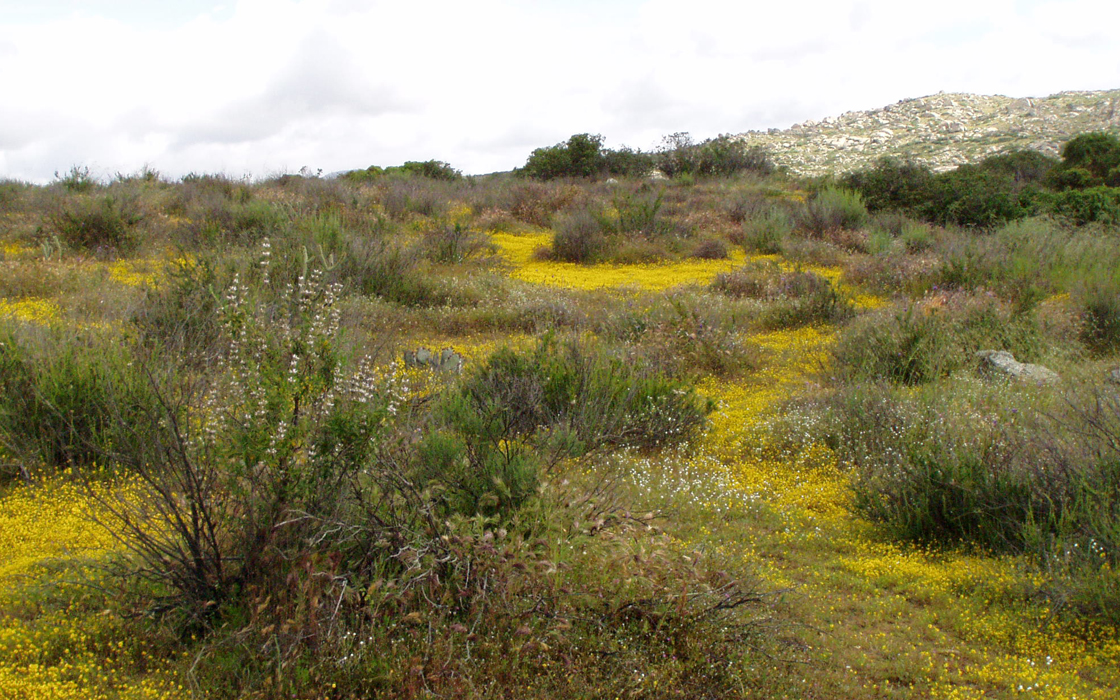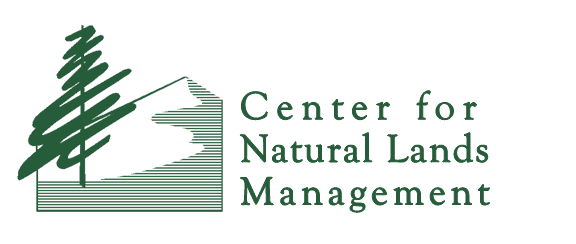





South Puget Sound, Washington
In Washington, CNLM focuses on applied research projects, developing and applying restoration protocols, and working collaboratively with federal and state governmental agencies, nonprofit organizations, private landowners, and volunteers who are committed to protecting this rare ecosystem. These endeavors include prairie restoration and rare species recovery, including coordinating conservation efforts for the Mazama pocket gopher, Taylor’s checkerspot butterfly, and streaked horned lark, as well as working to restore salmon habitat in the Chehalis River Basin.
Prairie Restoration – Invasive Plant Management
Invasive vegetation, such as Scotch broom, is a major cause of prairie habitat loss. To control these invasive plants CNLM staff, partners, and volunteers use a combination of techniques including spot spraying and targeted herbicide application, mowing, hand-pulling weeds, and prescribed fires. This suite of methods enables CNLM to plan and implement prescriptions for restoration that are most appropriate for each specific site and situation.
For more information contact:
Sanders Freed, CNLM, Pacific Northwest Preserve/Restoration Manager, sfreed@cnlm.org, (760) 731-7790 Ext. 304
South Sound Native Plant Nursery
For restoration projects, additional plant material may be needed because, for example, native habitat is being expanded or reintroduced, or because the soil seedbank may be insufficient. To provide appropriate plant materials for restoration projects in the South Puget Sound area, CNLM manages a native plant nursery program. Hundreds of pounds of native seed are grown at two seed farms as well as 400,000 native prairie plants grown annually for direct restoration and for use on the seed farms. The program is jointly managed by the Center for Natural Lands Management (CNLM) and the Sustainability in Prisons Project (a collaboration between the Washington Department of Corrections and the Evergreen State College).
Additional prairie preserves, federal species listings and increased collaboration have catalyzed a nursery expansion and increase in the sophistication of the nursery program including developing the knowledge of how to collect carefully from wild populations and how to germinate and propagate these (usually) rare species. This has advanced our research and development, including refining protocols for germination, container production, field cultivation, seed harvest and seed processing for more than 100 species of plants native to the South Puget Sound prairies.
Novel partnerships have increased community involvement and diversified the labor used in the nursery to include professionals, volunteers, college students, veterans, in-mates (as part of the Sustainability in Prisons Project) and AmeriCorps service members. Looking towards the future, the South Sound Conservation Nursery program will continue to develop production strategies, expand the suite of species grown, increase the available local prairie seed (from hundreds to thousands of pounds per year), and foster the creation of similar nursery efforts around the region.
For more information contact:
Anika Goldner, CNLM, Nursery Supervisor, agoldner@cnlm.org, (760) 731-7790 Ext. 313
Prescribed Fire
Fire is a vital component of South Sound prairie ecology. Fire removes undesirable vegetation and encourages new plant growth. As a result, a healthier landscape develops and attracts more diverse wildlife. Using fire as a restoration tool, typically we conduct more than 40 controlled burns per year throughout western Washington, covering over 2,000 acres of prairie and oak woodland habitat. Our prescribed fire program includes extensive training and coordination, partnerships, and research to improve our understanding of the role of fire in restoration and our ability to safely and effectively use this tool.
For more information contact:
info@cnlm.org
Collaborative Rare Species Management
CNLM’s collaborative conservation program focuses on actively facilitating the cooperative recovery of our rarest species throughout their historic range. By making up to date information readily available, providing forums for collaboration and discussion, and generating priorities and incentives for action, partners are able to most efficiently link together and work collectively on the highest priority conservation issues. CNLM leads many of the collaboratively generated priority actions such as streaked horned lark genetic rescue and Taylor’s checkerspot habitat enhancement in preparation for reintroduction. In addition to on-the-ground actions, CNLM is a lead partner for several broad-scale collaborative conservation programs such as the JBLM Army Compatible Use Buffer program and an Oregon & Washington State Wildlife Grant.
For more information contact:
info@cnlm.org
Riparian Restoration
Since 2004, we have been working with landowners in the Chehalis Basin to restore riparian corridors by strengthening stream banks, decreasing erosion, and controlling knotweed, an invasive species that out-competes native plants and insects and negatively impacts salmon populations. We offer knotweed eradication services to local landowners at no cost, and provide information to residents on the detrimental impacts of knotweed and other invasive species at workshops and community events. Many landowners are using this important public service to their benefit, and it provides us with the opportunity to further protect our native and imperiled species across South Puget Sound.
For more information contact:
info@cnlm.org
Restoration Science
CNLM staff determine information needs that are most limiting to successful restoration practices in South Puget Sound and conduct applied research in these areas. Such research typically is conducted collaboratively and may be in support of herbicide application, managed grazing, prescribed fire, mycorrhizal inoculation, and native seeding. The results of our research are communicated through workshops, reports, published scientific papers, and conference presentations. Additionally, there are rotating opportunities for student volunteers and graduate students to contribute to or lead restoration research projects.
For more information contact:
info@cnlm.org

